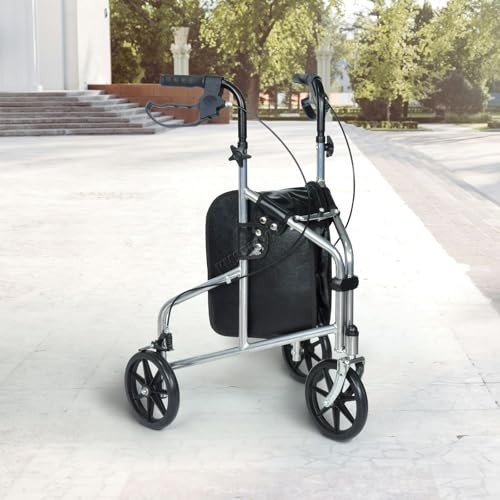Navigating the World of Mobility Scooters: A Comprehensive Guide
In an age where mobility is significantly acknowledged as a basic element of quality of life, the need for assistive devices has actually surged. Amongst these, mobility scooters stand out as a flexible and empowering choice for individuals with mobility obstacles. This thorough guide explores the world of mobility scooters, using insights into their types, advantages, purchasing considerations, and maintenance tips.
Comprehending Mobility Scooters
Mobility scooters are motorized cars created to help individuals with mobility concerns in moving around more freely and independently. They are especially helpful for those who discover strolling difficult due to conditions such as arthritis, numerous sclerosis, or post-surgical healing. Unlike manual wheelchairs, mobility scooters need minimal physical effort, making them an exceptional choice for extended use.
Kinds Of Mobility Scooters
Three-Wheel Scooters
- Pros: More maneuverable, lighter, and much easier to keep.
- Cons: Less steady on rough terrain.
- Best For: Indoor and smooth outdoor surface areas.
Four-Wheel Scooters
- Pros: More steady, better on rough terrain, and can carry heavier loads.
- Cons: Bulkier and less maneuverable.
- Best For: Outdoor usage, specifically in parks and on uneven surfaces.
Portable Scooters
- Pros: Lightweight, collapsible, and simple to transportation.
- Cons: Limited range and speed.
- Best For: Travel and periodic use.
Sturdy Scooters
- Pros: Built to handle much heavier users and rugged environments.
- Cons: More pricey and less portable.
- Best For: Users over 300 pounds or those who require to browse rough surface.
Standing Scooters
- Pros: Provide a standing position, which can be useful for users who can not sit for long periods.
- Cons: Limited stability and range.
- Best For: Users who choose standing and need short-distance assistance.
Benefits of Mobility Scooters
Enhanced Independence
- Mobility scooters permit users to travel longer ranges without fatigue, enabling them to participate more completely in day-to-day activities and social occasions.
Improved Safety
- With features like seat belts, anti-tip wheels, and brake systems, mobility scooters offer a more secure alternative to manual wheelchairs and walking aids.
Convenience and Support
- Adjustable seats, backrests, and armrests guarantee a comfy ride, minimizing the stress on the user's body.
Cost-efficient
- While the initial investment can be significant, mobility scooters are typically more economical in the long run compared to frequent taxi trips or specialized transport services.
Social Inclusion
- Mobility scooters facilitate higher social interaction by enabling users to participate in neighborhood activities and maintain a more active lifestyle.
Factors to Consider When Buying a Mobility Scooter
User Needs and Abilities
- Evaluate the user's physical condition, mobility requirements, and daily activities to figure out the most ideal type of scooter for sale near me.
Size and Weight Capacity
- Ensure the scooter can accommodate the user's size and weight conveniently and safely.
Variety and Speed
- Think about the normal range and speed needed for day-to-day usage. Some scooters have a variety of as much as 30 miles on a single charge.
Portability
- If travel is a concern, select a portable scooter that can be easily disassembled and transferred.
Maintenance and Support
- Select a reputable manufacturer that uses reliable client service and maintenance assistance.
Budget
- Set a spending plan and check out alternatives that use the best worth for money. Think about funding choices and potential insurance coverage.
Upkeep Tips for Mobility Scooters
Regular Cleaning
- Clean the scooter routinely to avoid dirt and debris from impacting its efficiency. Use a soft fabric and moderate cleaning agent.
Battery Maintenance
- Follow the producer's guidelines for battery charging and upkeep. Regularly examine the battery level and prevent deep discharges.
Tire Inspection
- Inspect the tires for wear and correct inflation. Replace or fix as required to guarantee a smooth and safe trip.
Lubrication
- Lube moving parts such as the chain and gears to reduce friction and prevent wear.
Professional Servicing
- Schedule regular professional servicing to address any issues and guarantee the scooter remains in optimal condition.
Frequently Asked Questions About Mobility Scooters
Are mobility scooters covered by insurance coverage?
- Some insurance strategies, including Medicare, might cover the expense of mobility scooters under specific conditions. Inspect with your service provider for specific details.
Can I utilize a mobility scooter inside?
- Yes, numerous mobility scooters are created for both indoor and outside use. Guarantee the scooter is ideal for the kind of surfaces you will be browsing.
How quickly can mobility scooters go?
- The speed varies by design, however many mobility scooters have an optimal speed of 4 to 8 miles per hour.
Do I need a license to operate a mobility scooter?

- In many nations, a license is not required to run a mobility scooter. However, it is important to follow regional guidelines and traffic laws.
Can I take a trip with a mobility scooter?
- Numerous mobility scooters are created to be portable and can be disassembled for travel. Talk to airline companies and transportation suppliers for particular requirements.
Mobility scooters are a transformative tool for individuals with mobility difficulties, using a mix of self-reliance, security, and convenience. By understanding the various types of scooters, thinking about essential buying aspects, and following maintenance best practices, users can take advantage of their mobility scooter and lead a more active and fulfilling life. Whether for day-to-day commutes or leisurely getaways, a well-chosen mobility scooter can be an important companion on the journey to boosted mobility scooter online and quality of life.

